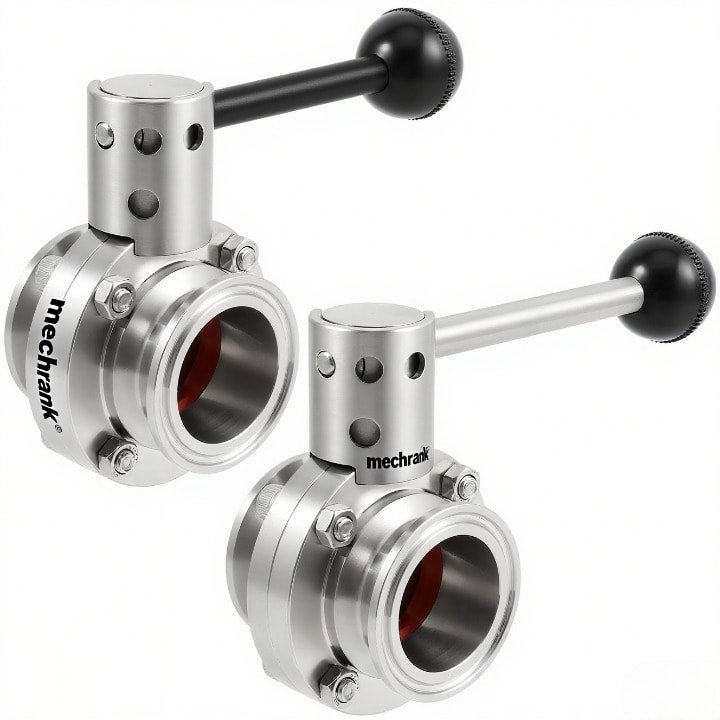A butterfly valve uses a spinning disc to control how fluids move. This lets people adjust flow exactly or stop it fast in a pipe. Many businesses use this valve because it works well. The table below shows where butterfly valves are important:
Industry | Application Details |
|---|---|
Water and Wastewater Treatment | Controls water and wastewater flow in treatment plants. It works on intake and discharge lines. |
HVAC Systems | Controls air, water, or steam flow in heating and cooling systems. |
Chemical and Petrochemical | Handles chemicals, gases, and fluids during mixing and moving. |
Food and Beverage | Controls liquid flow in making and packing food and drinks. |
Power Generation | Controls steam, condensate, and cooling water in power plants. |
Marine and Offshore | Controls seawater, fuel, and other fluids in ships and offshore places. |
Fire Protection Systems | Controls water and fire-fighting agent flow. |
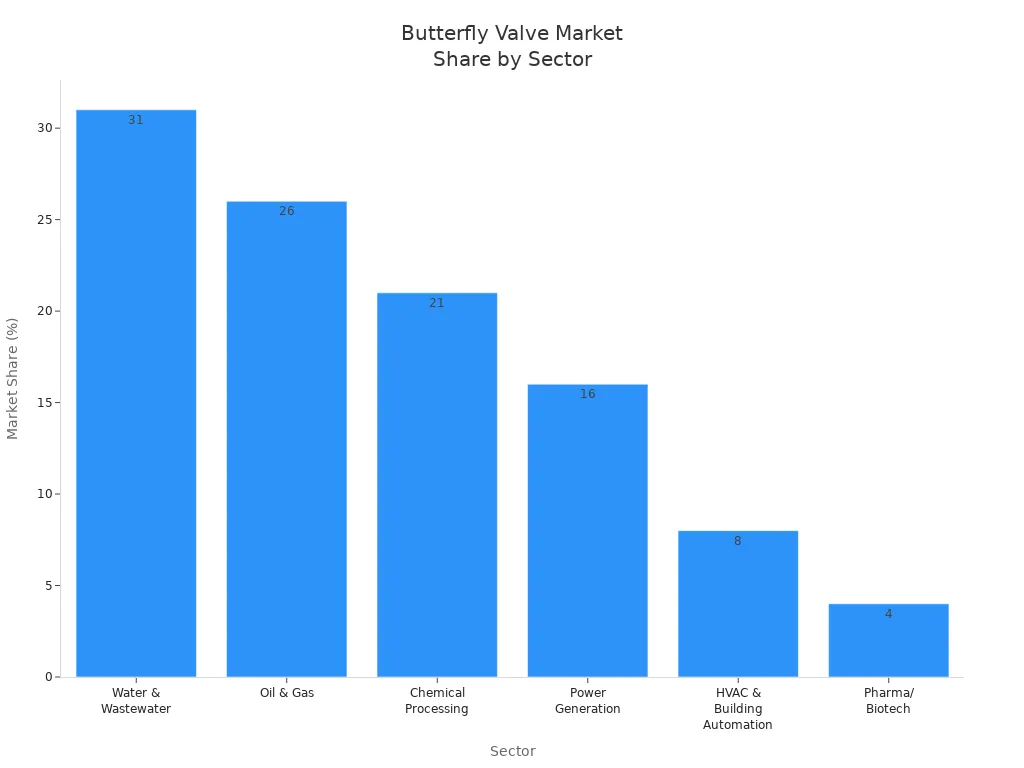
Key Takeaways
Butterfly valves use a spinning disc to control fluid flow fast. The disc opens or closes with just a quarter turn.
There are different types like wafer, lug, double flanged, and high-performance. Each type works best for certain jobs and pressures.
Picking the right materials for the valve body, disc, and seat is important. This helps the valve last longer and stay safe with many fluids and temperatures.
Butterfly valves are small and light. They do not cost much and are easy to fix. This makes them great for many industries like water treatment, HVAC, and food processing.
They are not good for very high pressure or exact flow control. They also do not work well with dirty fluids. So, it is important to pick the right valve type for your system.
What Are the Basics of Butterfly Valve Operation?
A butterfly valve operates by rotating a disc within the valve body, allowing or restricting fluid flow through a pipe. When the disc is turned parallel to the flow, the valve is fully open; when perpendicular, it is closed.
Definition
A butterfly valve is a device that controls how liquids or gases move in a pipe. It has a disc in the middle of the pipe. The disc connects to a handle or actuator outside the pipe. When you turn the handle, the disc spins a quarter turn to open or close the valve. This makes it easy and fast to control flow. Many industries use this valve because it works well and does not need much space.
Note: Turning the handle only a quarter turn opens or closes the butterfly valve quickly and easily.
Key Features
Butterfly valves are special because of their design and benefits. Here are some important features:
The simple and small shape lets you put it in tight spots.
It is light, so it is easy to move and fix.
The disc sits on a stem and spins to control flow.
You can open or close it fast with a quarter turn.
Offset designs help seal better, last longer, and wear less.
You can pick soft or metal seats for different heat and pressure.
There are many ways to connect it, like wafer, lug, or flanged.
You can use manual, electric, pneumatic, or hydraulic ways to control it.
Description | |
|---|---|
Quarter-turn operation | Needs only a 90° turn to open or close fast. |
Central disc on stem | The disc spins on a stem to control flow, not like valves that move straight. |
Offset designs | Zero, double, and triple offset types help seal better and last longer. |
Seat materials | Soft or metal seats let the valve work in different heat and pressure. |
Connection types | Wafer, lug, and flanged types fit many pipe setups. |
Actuation methods | You can use manual, electric, pneumatic, or hydraulic ways to control the valve. |
Butterfly valves can work with many pressures and temperatures. Regular ones work up to 14 bar (200 psi) and from -28 °C to 98 °C. Stronger types can handle up to 51 bar (740 psi) and up to 500 °C.
Many industries need butterfly valves to meet strict rules and certifications. Some common ones are API 609, ANSI, ISO, AWWA C504 & C516, EN 593, CE, UL, NSF 61, FM, and ATEX. These rules make sure the valve is safe and works well in different places.
How Does a Butterfly Valve Operate?
A butterfly valve operates by rotating a disc within the valve body to manage the flow of a fluid. This disc is connected to an actuator through a shaft, allowing precise control over the fluid passage.
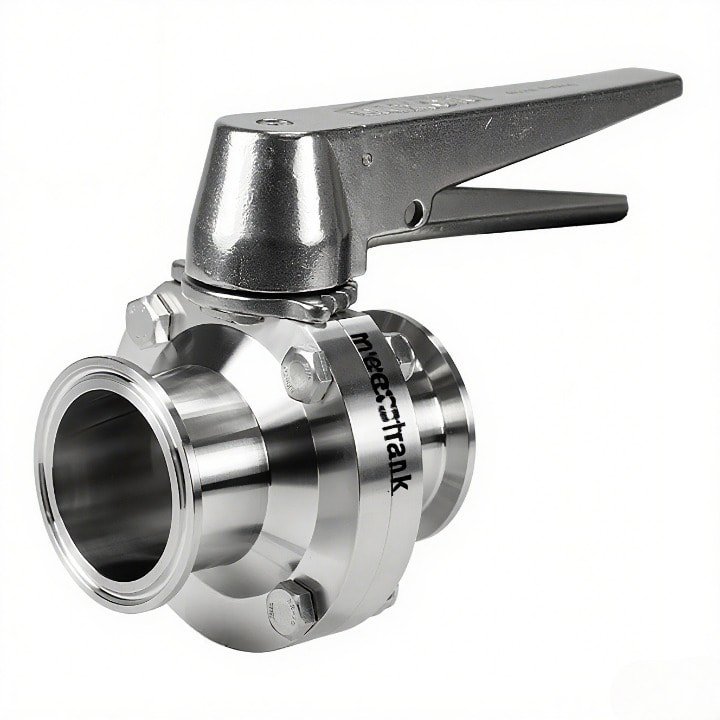
How It Works
A butterfly valve uses a simple quarter-turn mechanism to control fluid flow. The disc sits inside the pipe and connects to a rod or stem. When the valve is closed, the disc stands upright, blocking the flow. Turning the handle or actuator rotates the disc by 90 degrees. In the open position, the disc lies flat and lines up with the direction of the fluid. This allows the fluid to move through the pipe with little resistance. Operators can also leave the disc partly open to adjust the flow rate. This design makes the butterfly valve quick to open or close and easy to use for both shut-off and throttling.
Tip: The quarter-turn action lets workers stop or start flow almost instantly, which helps in emergency situations.
Main Components
A butterfly valve has several key parts. Each part plays a special role in how the valve works and how long it lasts.
Component | Function |
|---|---|
Body | Connects the valve to the pipes and supports all other parts. It must be strong to handle pressure. Wafer and lug are the two main body styles. |
Disc | Rotates to control the flow. When the disc is parallel to the flow, the valve is open. When perpendicular, it is closed. The disc’s material affects how well it works and how long it lasts. |
Seat | Forms a seal between the disc and the body to stop leaks. Usually made from rubber or PTFE for good sealing and chemical resistance. |
Stem | Connects the disc to the handle or actuator. It moves the disc when the valve opens or closes. Most stems use stainless steel for strength. |
Actuator | Moves the stem and disc. It can be manual (like a lever) or automatic (electric, pneumatic, or hydraulic). The actuator lets workers control the valve easily. |
Common problems can happen if the valve is not installed right or if parts wear out. For example, a worn seat or misaligned disc can cause leaks. Regular checks and maintenance help keep the butterfly valve working well.
What Are the Different Types of Butterfly Valves?
Butterfly valves come in several types, including Wafer, Lug, and Double Offset. Each type is designed for specific applications and offers unique benefits.
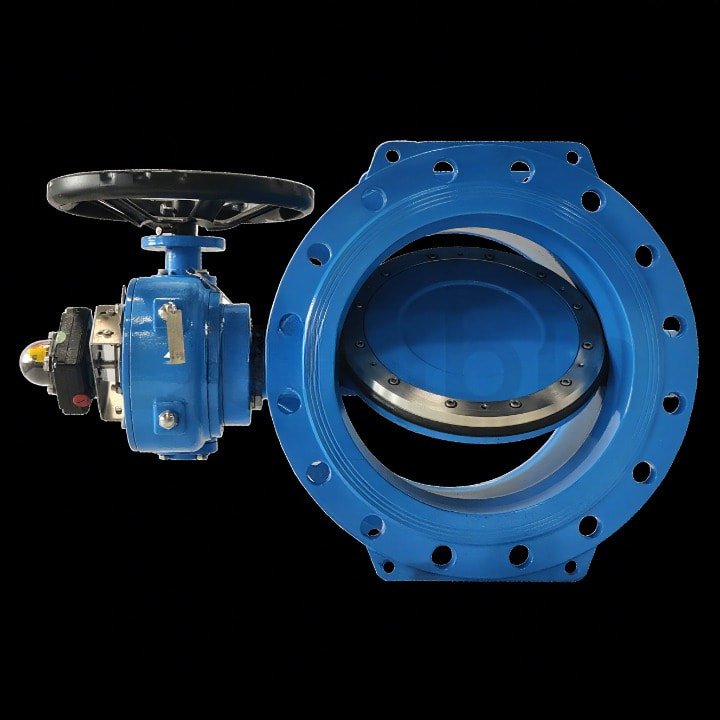
Wafer
Wafer butterfly valves are thin and light. They fit between two pipe flanges. Long bolts hold the valve and flanges together tightly. This design saves space and is easy to install in small areas. The disc turns a quarter turn to open or close the valve. This lets you control flow quickly. Wafer valves seal well in both directions, so they stop backflow. They are used in water treatment and HVAC systems. They are also good for places with little space and where sealing is important.
Small and light, so they are easy to move
Good for water, HVAC, and engineering jobs
Not good for the end of a pipeline
Note: Wafer butterfly valves work best when you need a tight seal and do not have much space.
Lug
Lug-type butterfly valves have threaded lugs on the body. These lugs let bolts connect the valve to each pipe flange. This setup lets workers take off one side of the pipe for repairs. They do not have to shut down the whole system. Lug valves support the ends of the pipes. They can handle dead-end service, which means one side can be closed off.
Feature | Lug-Type Butterfly Valve |
|---|---|
Threaded Lugs | Yes, so you can bolt on each side |
One-Side Pipeline Removal | Yes, you can fix one side at a time |
Support at Pipeline Ends | Gives strong support |
Dead-End Service | Works well, can close off one side |
Weight | Heavier than wafer type |
Cost | Costs more than wafer type |
Lug valves are used in fire protection and water systems. They are also used where it is easy to do repairs.
Double Flanged
Double flanged butterfly valves have flanges on both ends. Workers bolt these flanges to the pipe flanges. This makes a strong and stiff connection. It also seals better for high-pressure systems. Double flanged valves are heavier and cost more than wafer or lug types. But they last longer and can handle hard jobs.
Best for pipelines with high pressure and heat
Used in oil, gas, chemical plants, and power stations
Good for big pipes and tough places
Tip: Double flanged valves are great for long pipes and places where leaks must not happen.
High-Performance
High-performance butterfly valves use a double offset design. The disc moves away from the seat as it opens. This lowers wear and helps the valve last longer. These valves seal tightly in both directions. They work well in high-pressure and high-temperature systems. The special design gives better control and needs less fixing.
Handles high heat and pressure
Used in chemical plants, power plants, and tough jobs
Easy to fix with seats and packing you can change
High-performance valves give strong shutoff and control. They work well even in hard places.
What Materials Are Used to Make Butterfly Valves
Butterfly valves are typically made from materials such as stainless steel, cast iron, ductile iron, PVC, and aluminum. The choice of material depends on the application, pressure, and temperature conditions.
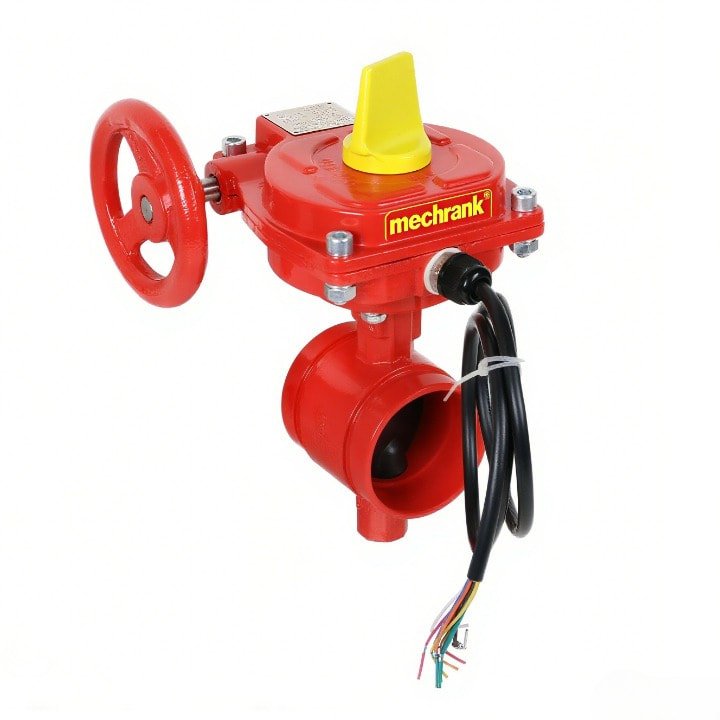
Body Options
Valve bodies are made from different materials for different jobs. The table below lists common materials and their uses:
Material | Description & Composition | Advantages & Applications |
|---|---|---|
Carbon Steel | Alloy with up to 2.5% carbon; common grades ASTM A216 WCB and LCC | Strong and cheap, works in hot or cold places. Good for fluids that do not cause rust. Not good for acids or saltwater. |
Stainless Steel | Alloy with chromium, nickel, molybdenum | Very strong, does not rust, and fights chemicals. Used in food, chemical, and water systems. |
Hastelloy | Nickel-chromium-molybdenum alloy | Handles high heat and strong chemicals. Used in oil, gas, and power plants. |
Brass | Copper-zinc alloy | Lasts long, does not rust, and stops germs. Used in water, food, and medicine. Not for water with lots of chlorine. |
Nickel Alloys | Nickel-based metals | Great for tough chemicals. Better than stainless steel in hard jobs. |
Titanium Alloys | High strength-to-weight ratio alloys | Light and strong, does not rust in seawater. Used in water treatment and on ships. |
Nickel Aluminum Bronze | Copper alloy with aluminum, nickel, iron | Fights rust and germs. Good for seawater and pipes on ships. |
PVC, CPVC, PP, GFPP, PVDF, ABS (Plastics) | Various plastic types | Resist chemicals, easy to clean, and light. Used in food, water, and chemical plants. Each type has a heat limit. |
Tip: Stainless steel and titanium alloys are best for places with lots of chemicals or saltwater.
Disc and Seat Choices
Valve discs and seats use special materials to seal tight and last longer. Here are some common choices:
Discs are often made from stainless steel, cast steel, or aluminum bronze. Some have a special coating.
Seats use soft plastics like EPDM, Buna-N, PTFE, or strong PTFE for tight seals.
Soft seats work for low heat and pressure. Metal seats are for high heat and pressure.
EPDM seats resist heat, steam, and cleaning. They last long in water and steam jobs.
Buna-N seats work well with oils and wear. They do not work in high heat or with strong chemicals.
PTFE seats resist heat, wear, and chemicals. They seal well in tough chemical jobs.
Viton seats handle high heat and chemicals. They last long and do not get old fast.
Silicone rubber seats stay safe and stable for food and drinks.
Valve discs sometimes get extra hard to stop wear. High-performance valves use PTFE or RTFE seats with backing rings. This design gives a tight seal and slow wear.
Performance Impact
The material you pick changes how the valve works and lasts. Stainless steel and titanium do not rust and fight chemicals, so they last longer in tough places. Carbon steel is strong but needs a coating for acids or saltwater. Plastics like PVC and PVDF fight chemicals but cannot take high pressure.
Seat materials change how well the valve seals and how long it lasts. EPDM seats work well in water but swell with oils. Buna-N seats seal oils but do not last in heat or ozone. PTFE seats handle heat and chemicals, so they are good for hard jobs. Metal seats work in high heat and dirty fluids, and they are fire-safe.
Picking the right material helps the valve seal better, last longer, and stay safe. The job, fluid, and temperature help you choose the best material.
What Are the Pros, Cons, and Uses of Butterfly Valves?
Butterfly valves are widely used in various industries due to their compact design, quick operation, and cost-effectiveness. However, they have limitations in high-pressure applications and can be less durable than other valve types.
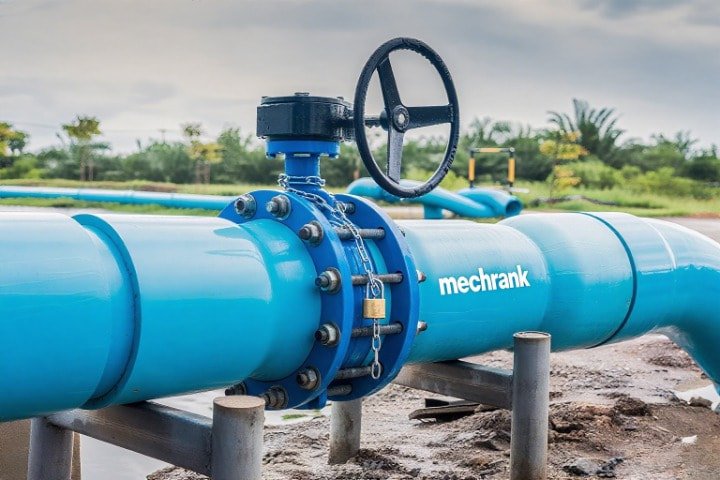
Advantages
Butterfly valves have many good points for moving fluids. They are small and light, so they fit in tight spaces. This makes putting them in place easy. You can open or close them fast with a quarter turn. They let lots of fluid pass through and do not slow it down much. Their simple build means there are fewer parts to fix. This means you do not need to do much maintenance. You also do not have to stop work often. Some types work well with high pressure and heat. These are good for tough jobs. If you use the right lining, they can handle strong chemicals. They cost less to buy and keep working than other valves.
Small and light, so they are easy to put in
Fast quarter-turn lets you control flow quickly
Lots of fluid can move through with little slowdown
Strong and last a long time
Save money for big systems
Used in many different jobs
Tip: Their simple build and low upkeep make them great for water, chemical, and HVAC jobs.
Disadvantages
Butterfly valves also have some weak points. They do not work well with very high pressure or heat. The disc and seat can bend or leak. The disc always sits in the way of the fluid. This causes a small drop in pressure and can trap dirt. They are not good for fine flow control. You cannot make tiny changes easily. They are not the best for vacuum jobs or rough fluids. These can wear out the disc and seat fast. In clean jobs, like food, cleaning is hard because of the disc.
Hard to control flow exactly
Can rust or wear out in tough places
Hard to clean for food and drink jobs
Applications
Butterfly valves are used in many places. Cities use them in water and wastewater plants to control flow. Chemical plants use them because they work fast and fight rust. Food and drink factories use them to move liquids. HVAC systems use them because they are small and quick. Farms use them for watering crops. They are also used in making beer and soda.
Application Area | Typical Use |
|---|---|
Water Treatment | Stops and controls flow |
Chemical Processing | Handles strong fluids |
Food & Beverage | Moves liquids in factories |
HVAC Systems | Controls air and water |
Agriculture | Runs watering systems |
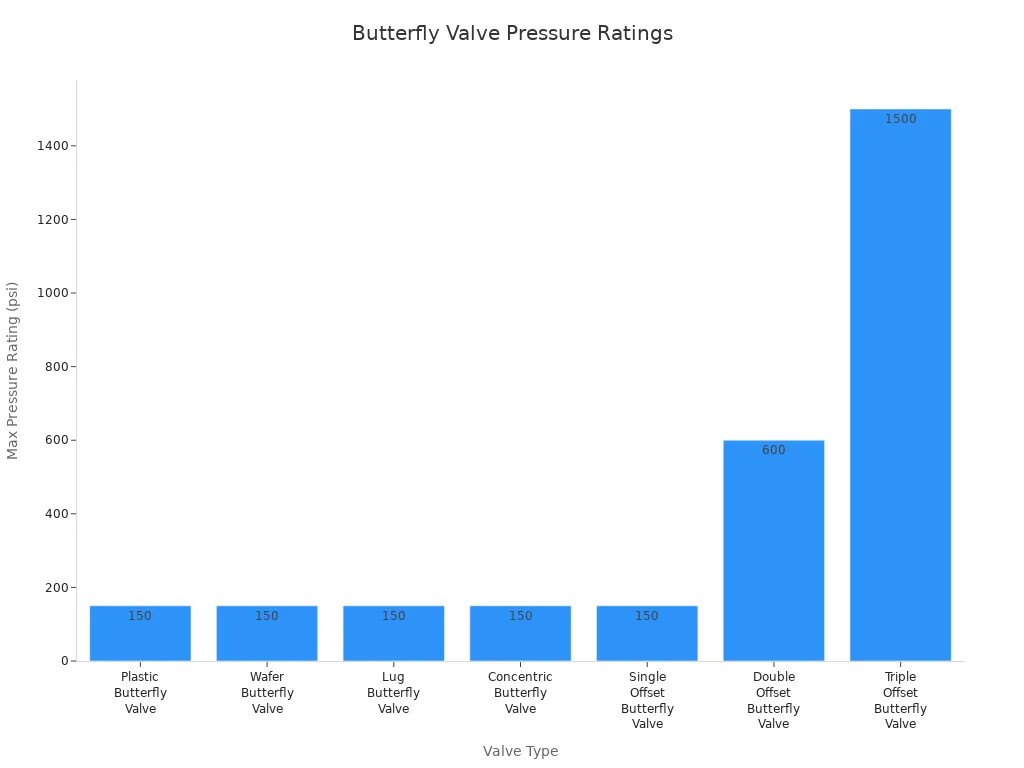
Comparison with Other Valves
Butterfly valves are not the same as gate or ball valves. Gate valves seal tighter and work better with high pressure. But they need more care and space. Ball valves seal well and last long. They cost more, especially if they are big. Butterfly valves are easier to put in and fix. They have fewer parts that move. They cost less for big pipes. If they have metal seats, they can last up to 80-90 years.
Feature | Butterfly Valve | Gate Valve | Ball Valve |
|---|---|---|---|
Cost | Lower | Moderate | Higher |
Maintenance | Easier | More complex | Moderate |
Good, less tight | Excellent | Excellent | |
Lifespan | Long | Long | Long |
Space Needed | Minimal | More | More |
Note: Pick butterfly valves to save money and for easy care in big, low-pressure jobs. Use gate or ball valves if you need a tight seal in high-pressure or important places.
Picking the right valve means thinking about many things. You need to know what fluid will go through it. You should check the temperature and pressure in the system. The place where you put the valve also matters. Users must make sure the materials will not react with the fluid. They should look at how the valve connects to the pipes. It is important to pick how you want to open or close the valve. You also need to think about how easy it is to fix or clean.
Check the valve often and keep it clean. Change the seals when they get old. This helps the valve last longer.
Some new valves use better materials and smart features. These changes help the valve work better and save energy.
Always look at what your system needs. Read the valve’s information sheet before you decide which one to buy.
FAQ
What is the main purpose of a butterfly valve?
A butterfly valve helps control how liquids or gases move in a pipe. You can use it to start, stop, or change the flow fast. Many companies use it because it works well and does not take up much space.
Can a butterfly valve handle high-pressure systems?
Some butterfly valves can work with higher pressure. These are called high-performance types. Regular butterfly valves are better for low or medium pressure. Always look at the pressure rating before using the valve.
How does a butterfly valve prevent leaks?
The seat inside the valve presses tightly against the disc. This tight fit helps keep leaks from happening. Soft seats are good for most uses. Metal seats are better when there is a lot of heat or pressure.
What maintenance does a butterfly valve need?
You should check the valve often to keep it working well. Look at the seat and disc to see if they are worn out. Clean the valve and change the seals when needed. This will help the valve last longer.
Are butterfly valves suitable for food and beverage applications?
Yes, many butterfly valves are safe for food and drinks. They use stainless steel and special seats to stop germs and dirt. Always pick valves that have the right safety certificates for food jobs.

